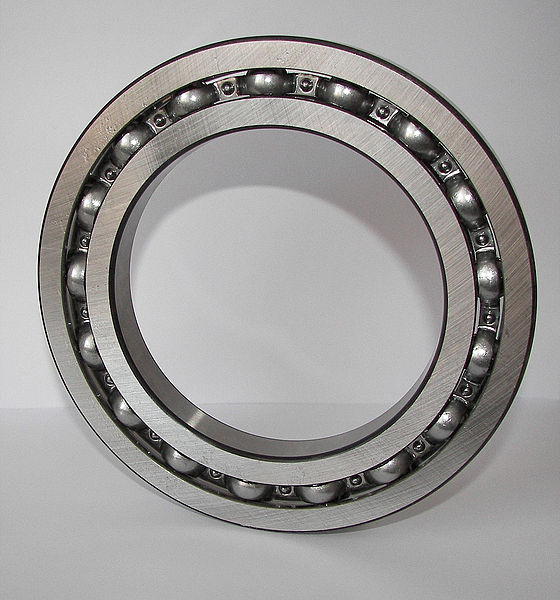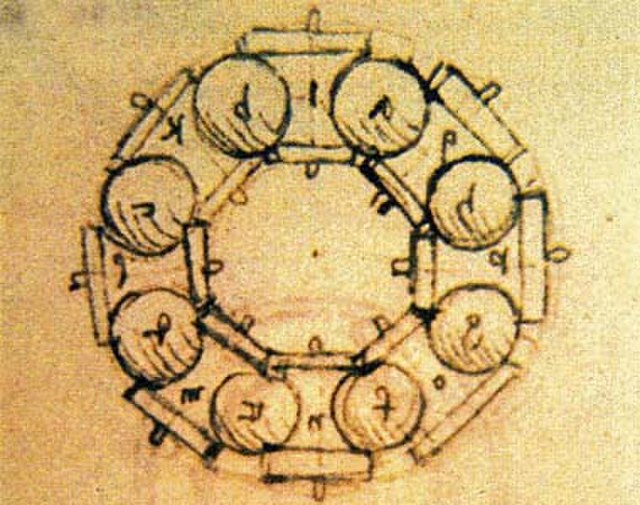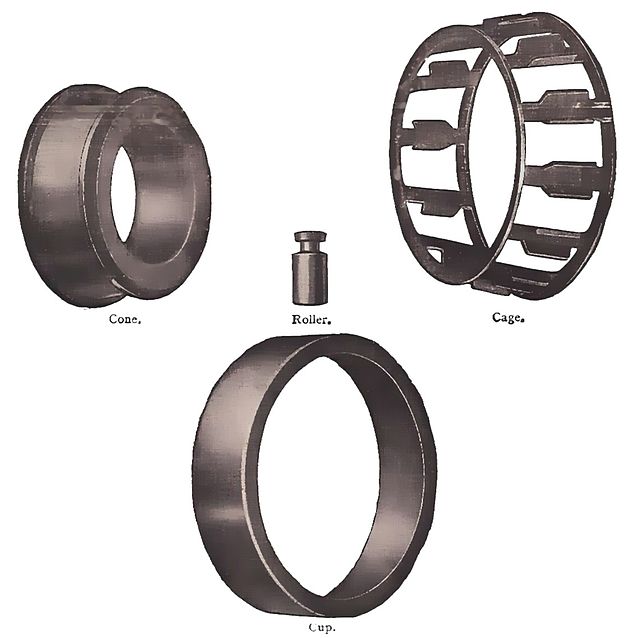A bearing is a machine element that constrains relative motion to only the desired motion and reduces friction between moving parts. The design of the bearing may, for example, provide for free linear movement of the moving part or for free rotation around a fixed axis; or, it may prevent a motion by controlling the vectors of normal forces that bear on the moving parts. Most bearings facilitate the desired motion by minimizing friction. Bearings are classified broadly according to the type of operation, the motions allowed, or the directions of the loads (forces) applied to the parts.
A ball bearing
Drawing of Leonardo da Vinci (1452–1519) Study of a ball bearing
Early Timken tapered roller bearing with notched rollers
Machine element or hardware refers to an elementary component of a machine. These elements consist of three basic types:structural components such as frame members, bearings, axles, splines, fasteners, seals, and lubricants,
mechanisms that control movement in various ways such as gear trains, belt or chain drives, linkages, cam and follower systems, including brakes and clutches, and
control components such as buttons, switches, indicators, sensors, actuators and computer controllers.
NSK Support Roller cut (cropped)




